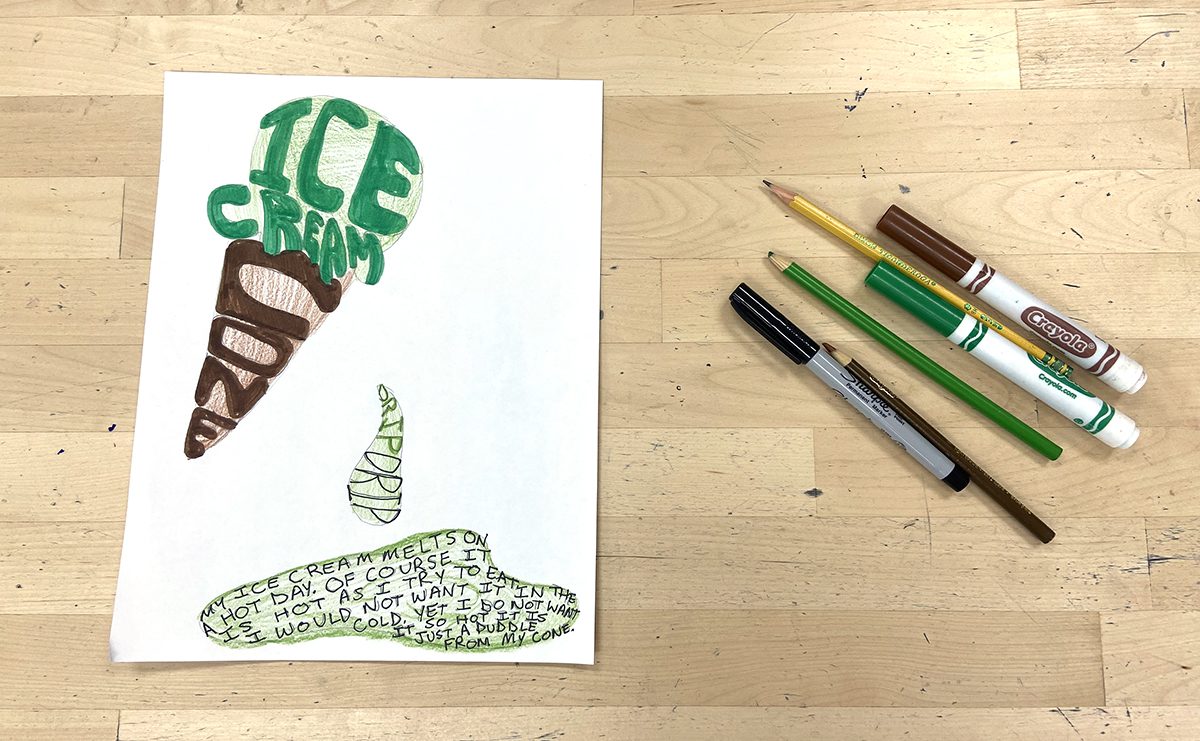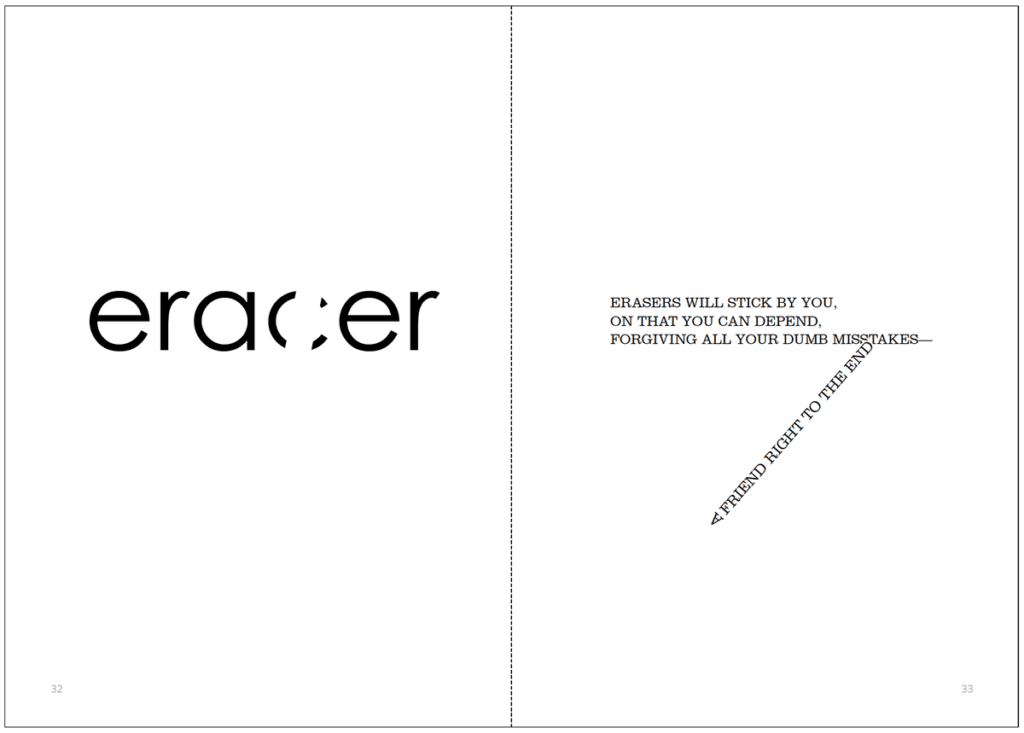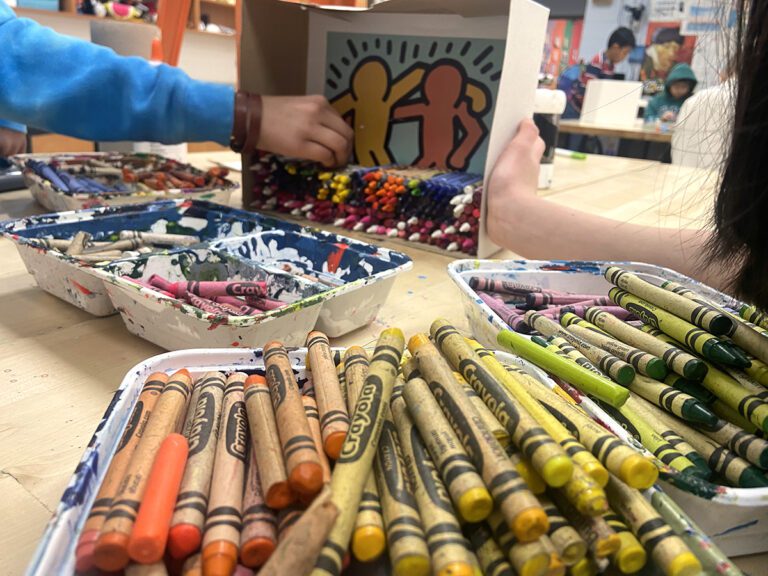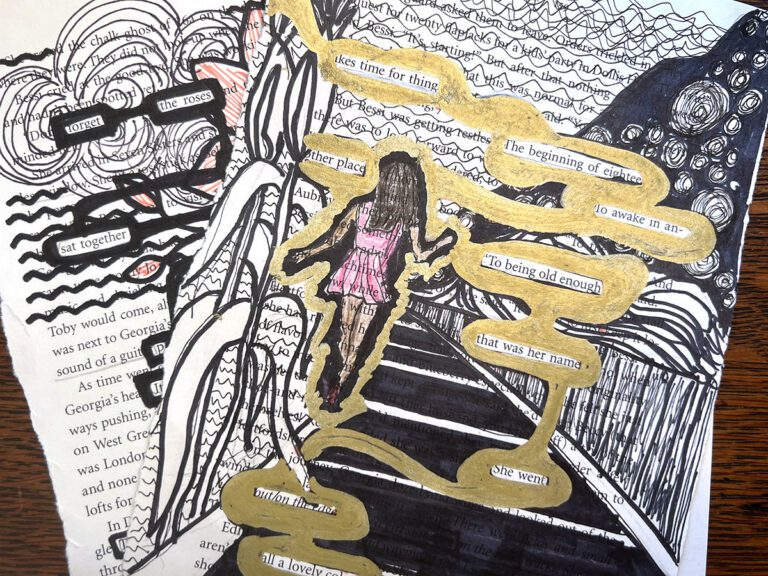Note: Be sure to review all resources and preview all artists before determining if they are appropriate to share with your students.
Imagine a poem that goes beyond words lined on a page—a poem where typography plays a pivotal role in enhancing meaning. Concrete poems, sometimes called shape poems, break the mold of traditional writing and bridge visual and written expression. In a concrete poem, the shape and arrangement of the poem’s words create a picture reflecting the poem’s theme. For example, a poem about rain could have words cascading down the page like a stream of raindrops. This format encourages students to see words as an artistic medium and subject matter they can manipulate.
Discover how concrete poems can support all students, ignite creativity, and be a springboard for more connections in the art room!
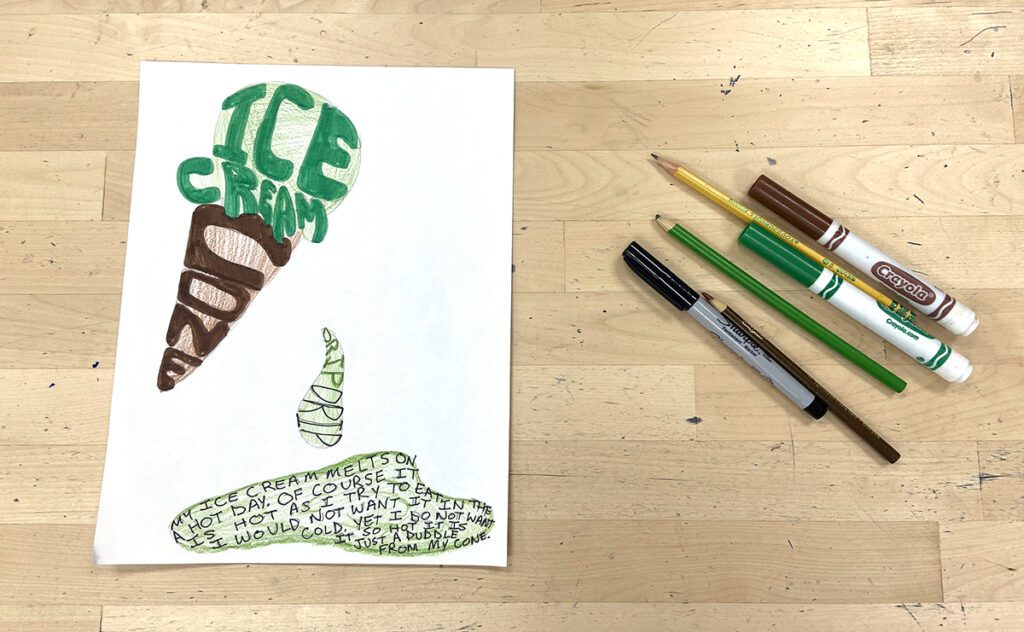
How can concrete poems support all students?
Combining poetry and art makes for a strong cross-curricular lesson. Using concrete poems in particular is the perfect way to engage all learners because they require students to use several modalities. Students consider the words, the image or shape, the action or feelings, and how they all support each other to convey the final poem.
There are even added benefits for English Language Learners! The reinforcement of words and shapes strengthens vocabulary and meaning-making. The playful manipulation of language can also provide a fun and safe way for students to explore figurative language. The drawing and visual components give students still developing their written English skills another mode of expression.
Show students strong examples of concrete poems for inspiration.
Note: Be sure to review all resources and preview all artists before determining if they are appropriate to share with your students.
The infinite ways to make a concrete poem can make them equally exciting and daunting. Sometimes, the best way to get started is by seeing the possibilities in action. Share examples of concrete poems with your students to spark their imaginations. Discuss with students how the words and images relate and see how many connections they can find!
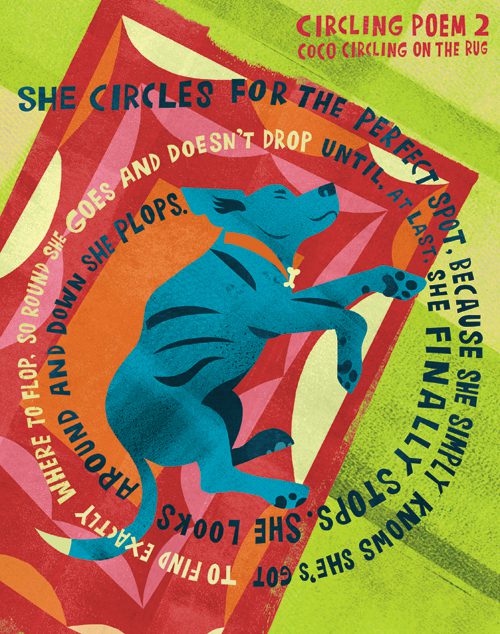
Here are three examples to start with:
- A Dazzling Display of Dogs written by Betsy Franco and illustrated by Michael Wertz
Dogs are a person’s best friend and many students will feel an instant bond with the lovable pooches in the poem. The illustrations, like the one above, are bright and eye-catching and the poems are short and simple for beginner readers. - Calligrammes: Poems of Peace and War 1913-1916 written by Guillaume Apollinaire
This poem can serve as a wonderful historical example and show students how art is a universal language. See if students can decipher what the French poem is about based on the artistic arrangement. - Wet Cement: A Mix of Concrete Poems written by Bob Raczka
Raczka’s concrete poem about erasers, below, is perfectly suited for the art room and filled with delightful and clever connections. For example, there is the “erased” mistake in the title and the word “end” is also the end of the poem and the end of the pencil.
Build concrete poems together for less stress.
Concrete poems look complex but there are ways to scaffold the process for success. The key, just like with a strong artwork, is to take time for ideation before diving into the final product. Write one poem together as a class and then guide the students through the steps so they can create their own!
Follow these steps to compose a concrete poem:
- Select a subject; it can be a simple shape, like a ball, or a complex object, like a vehicle.
- Brainstorm word associations for the subject (verbs, adjectives, sounds, and stories) for more evocative writing.
- Share word associations in a quick pair share or small group discussion to generate more ideas and refine word selections.
- Sketch the subject and provide reference images if needed.
- Break down the sketch into simple outlines and transfer to a final paper.
- Arrange the words on the page by outlining the subject or filling in the subject.
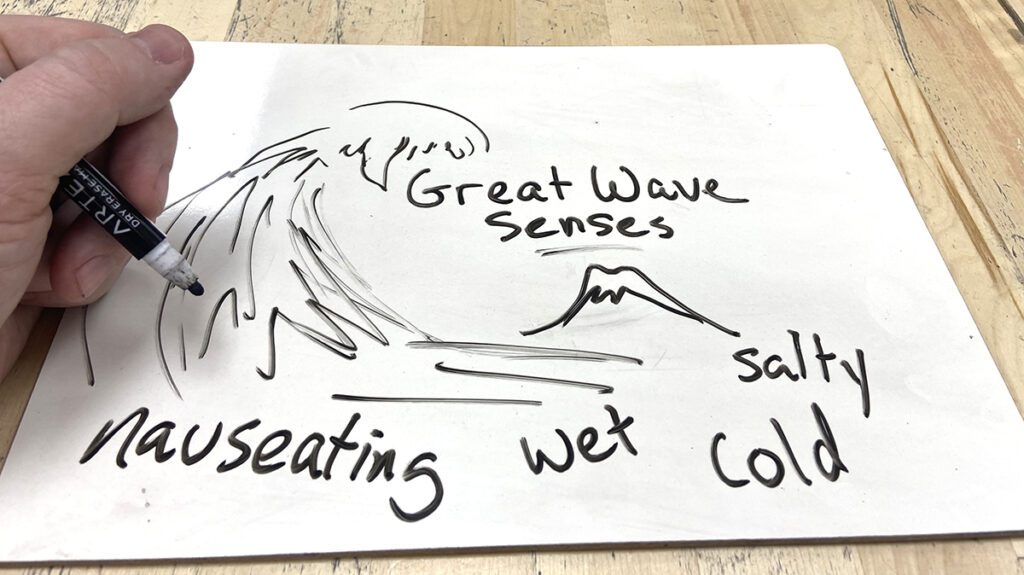
Use concrete poems as a foundation to build skills in related art forms.
Concrete poems build skills that extend far beyond the page. Show your students work by elementary art teacher and contemporary illustrator, Joe Mills. Mills is a Chicago-based artist known for his calligrams, which are similar to concrete poems. A calligram is when individual words take on a shape that reveals their meaning. Mills stretches and arranges fonts to form stunning images. They often have pop culture connections that make an easy entry point for discussion.

Encourage your students to build off of their poems with these creative connections:
- Calligraphy
Explore beautiful handwriting styles and experiment with pen and ink. - Graphic Design
Introduce the concept of negative space through the areas around the words and play with layout, proportion, scale, and balance. - Illustration
Capture the story behind the concrete poem with additional drawings.
Concrete poems offer a powerful way to merge written and visual language in your classroom. Introduce inspirational concrete poems to get your students’ imaginations in gear. Use the ideation stage to help students identify and communicate complex feelings and experiences. Spark creativity and reinforce meaning as students navigate how to pair text and shape together in a complementary way. All you need to grab is paper, pencils, and a sprinkle of imagination and you’re set to dive into the world of concrete poems to support all of your students!
For more art and poetry ideas to support visual literacy, check out the following resources:
- 12 Art and Poem Pairings to Inspire Creative Expression in Your Art Room
- 3 Ridiculous and Spontaneous Ways to Bring Poetry Into the Art Room
- Don’t Miss This One-Day Lesson That Connects Poetry and Art Analysis
How do you encourage your students to combine text and images?
What is your favorite form of poetry to share with students?
Magazine articles and podcasts are opinions of professional education contributors and do not necessarily represent the position of the Art of Education University (AOEU) or its academic offerings. Contributors use terms in the way they are most often talked about in the scope of their educational experiences.
